
About Oaks (home) | Map | Plant List | Cultivar/Species Information | Sources | Other Campus Oaks of Interest
Latin Name: Quercus velutina
Common Name: Black Oak
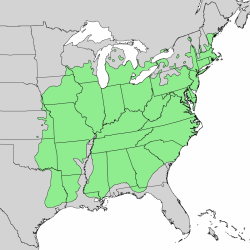
Cultivar:
Family: Fagaceae
Division: Red
Range: Maine to Florida panhandle, west to east TX, OK, KS, and the eastern edge of NE. Curious gap along most of the Mississippi River south of the Ohio R.
Introduced: 1800
Sun/Shade:
Height: 50' - 60'
Form: Irregular, from narrow to wide-spread
Zones: 3 - 9
Flower: Male flowers in pendulous catkins, female flowers are inconspicuous spike in the leaf axils.
Leaves: Similar to Quercus rubra. 4" - 10', 7 - 9 pointed bristle-tipped lobes with deep sinuses. Lustrous dark green above, paler beneath. Even more variable than most oaks. ID tip: patches of tan or reddish-brown hair near the forks of the veins on the undersides.
Fall Color: dull red in good years
Fruit: Acorn, solitary or in pairs, ½" - ¾", deep cap covering up to half the acorn. Reddish brown.
Buds: sharply pointed with pale pubescence
Bark: almost black; inner bark is orange, bitter-tasting, and used as a yellow dye (quercitron).
Wildlife: Acorns eaten by squirrels, mice, deer, raccoon, eastern chipmunk, black bears, opossum, game birds, jays, etc.; the foliage is eaten by numerous species of moths, butterflies, and skippers. Squirrels, songbirds, and bats live in the canopy.
For detailed information about insect associations see Illinois Wildflower's Quercus velutina page.
Disease issues:
Cultural Uses: Tribes' medical uses include bark (chewed or infused) used for dysentery, mouth sores, as an emetic and antiseptic, for chapped skin, hoarseness, coughs.
Folklore:
Notes:
Where to find Quercus velutina: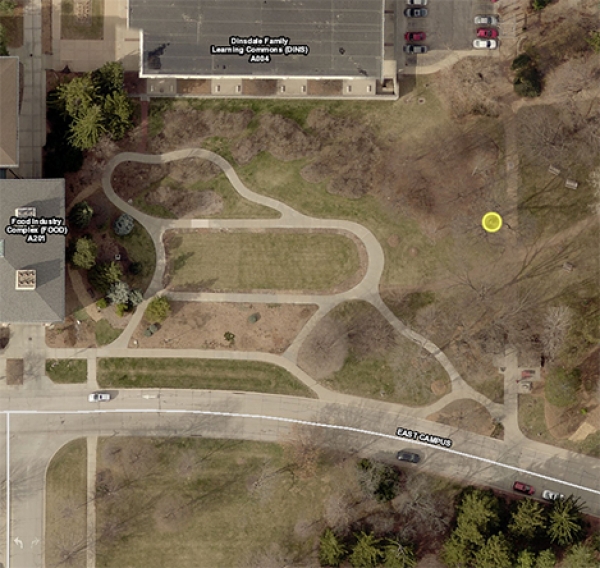
←Previous Oak → RETURN TO FIRST OAK
All images from Maxwell Arboretum unless notes otherwise.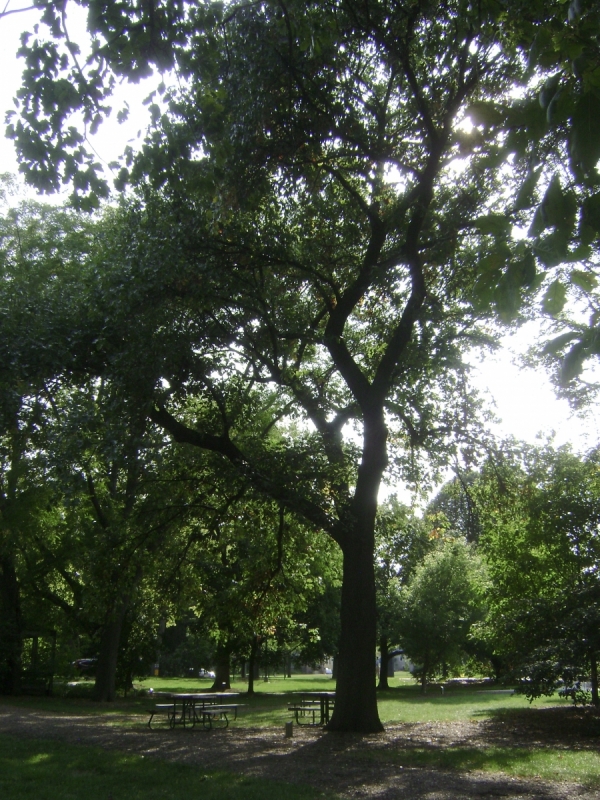
Form
New Red Pubescent Foliage
This is a young sapling elsewhere on campus.
Male Catkins and New Foliage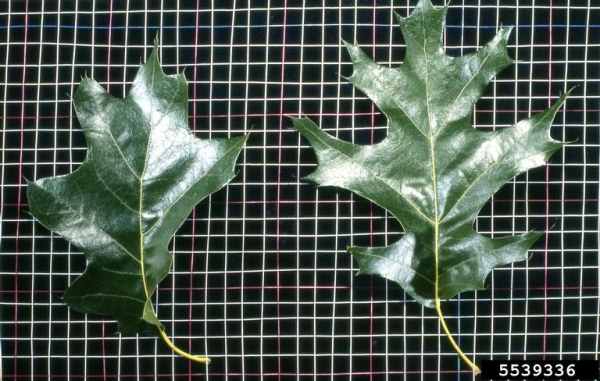
Foliage
T. Davis Sydnor, The Ohio State University, Bugwood.org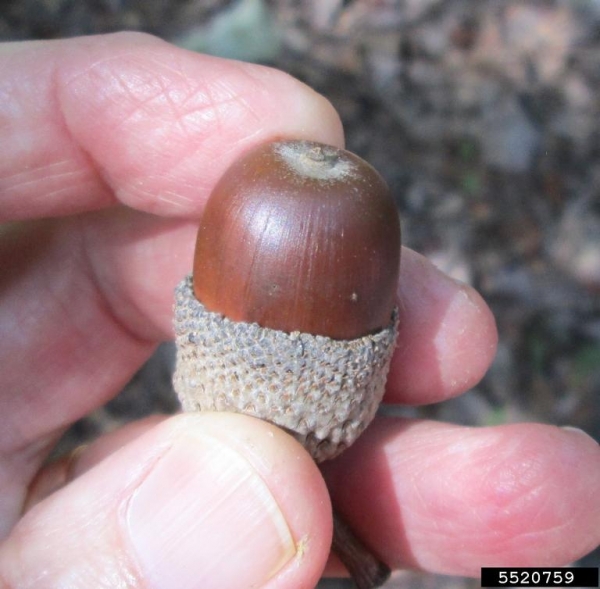
Acorn
David Stephens, Bugwood.org
Lichen-covered Bark